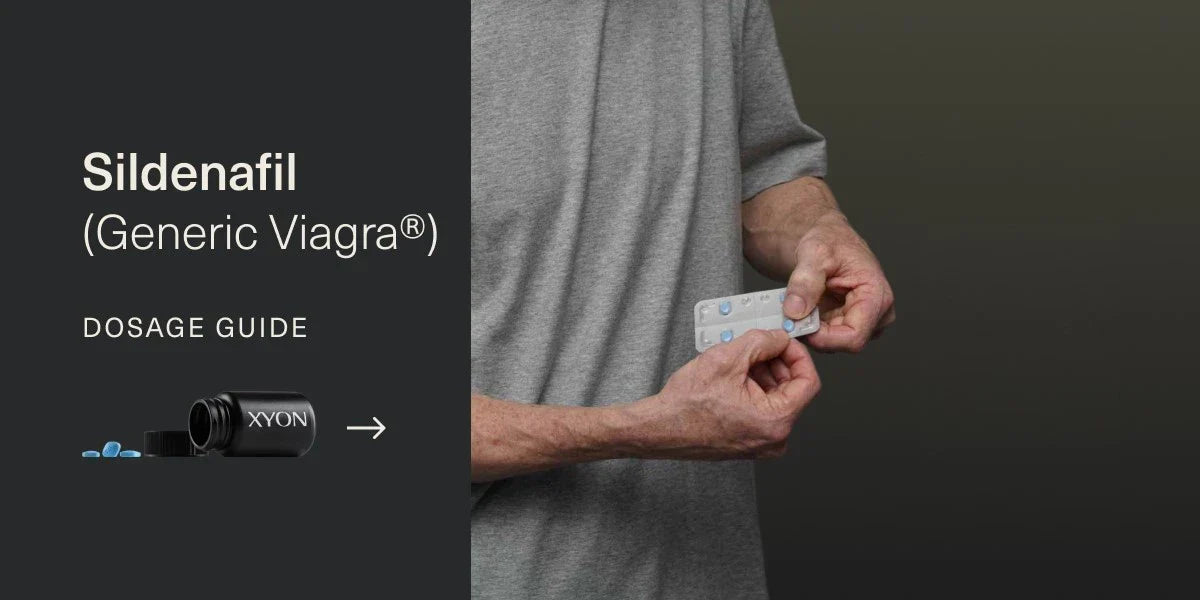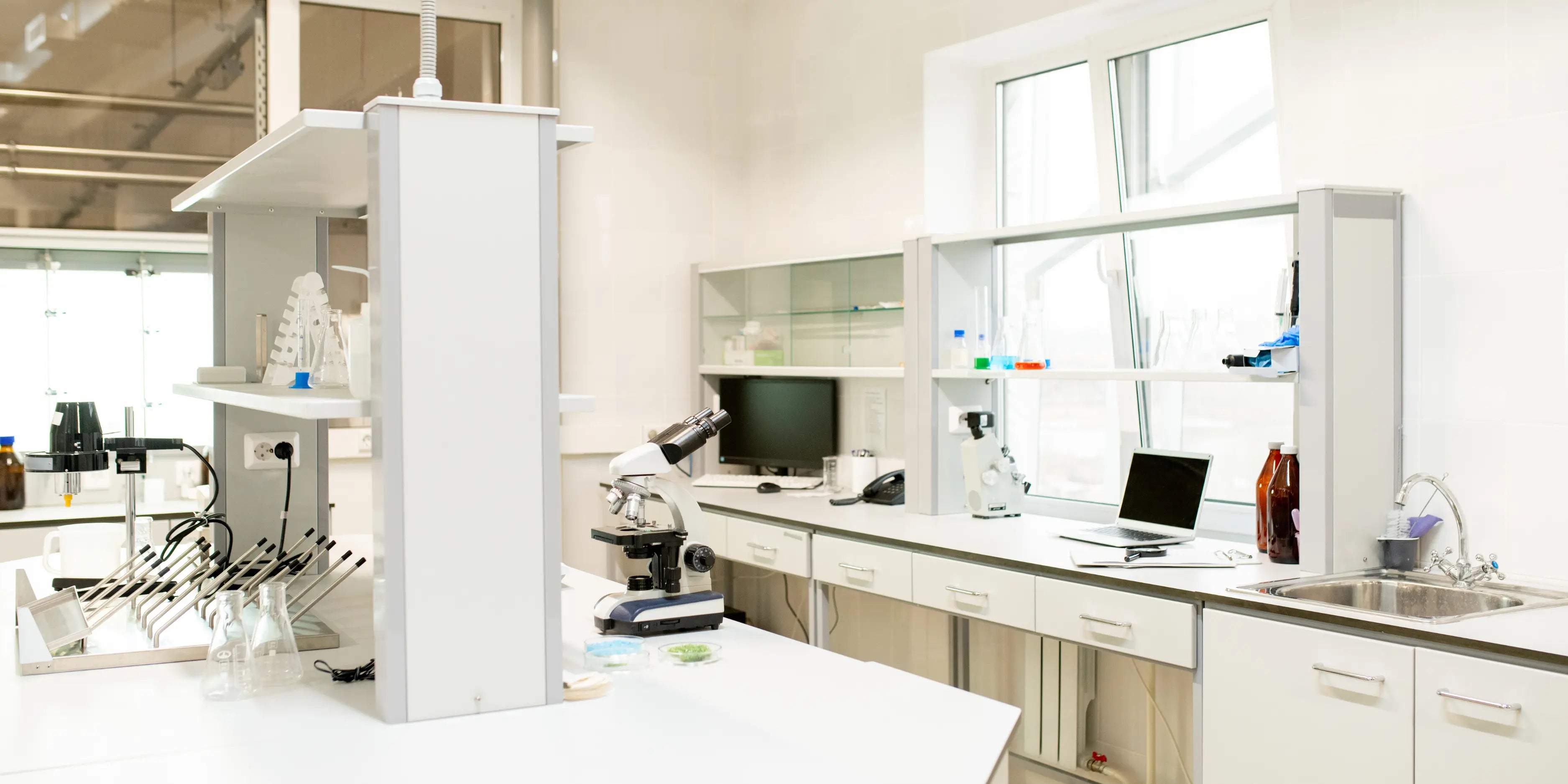Erectile dysfunction is more common than most people think. Fortunately, there’s a whole class of medications called phosphodiesterase type 5 inhibitors (PDE5is) that can be used to treat it. You recognize them by their brand names, (Viagra, Cialis, Levitra) but in most cases, sildenafil, tadalafil and other medications in this class can be taken by men without causing side effects. While they work in essentially the same way to help regain erectile function, there are subtle differences between these medications that can influence the type of possible side effects and how serious they are. Let’s take a closer look at why ED medications can cause side effects, how side effects between ED drugs compare, and offer some general advice on how to stay safe in a sea of options for ED management.
How do ED medications work?
Erectile dysfunction doesn’t have a single cause, and for many patients, it can be due to a combination of physiological and psychological factors. ED medications such as sildenafil and tadalafil work by addressing a physiological cause: insufficient blood flow to the penis.
PDE5is are enzyme blockers. They stop an enzyme called phosphodiesterase type 5 (PDE-5) from transforming a molecule called cGMP into smaller molecules through a variety of different cellular processes. By helping to increase cGMP levels in the blood vessels, PDE5is influence smooth muscle relaxation, resulting in increased blood flow and stronger erections. It’s also been observed that PDE5is can improve endothelial function and help maintain a healthy circulatory system. One of the ways this can positively affect erectile function is by reducing the death of smooth muscle cells in the blood vessels that supply the spongy tissue of the penis (Dhaliwal and Gupta, 2023).
Why do ED medications have side effects?
All medications have the potential to cause side effects, and ED treatments are no exception. The reason drugs such as sildenafil and tadalafil have been associated with side effects has to do with how they work. PDE (phosphodiesterase) is an enzyme that has several isozymes, so you can think of it as being a family of enzymes that all target the same type of chemical reaction but have key structural differences. Different isozymes of PDE are found in various tissues throughout the body, and it’s possible for inhibitors to bind to more than one type. It’s one of the reasons why sildenafil and tadalafil are also approved to treat pulmonary hypertension (high blood pressure in the arteries of the lungs) and tadalafil specifically can be used to manage benign prostatic hyperplasia (enlarged prostate gland).
Sildenafil, tadalafil, and vardenafil all target PDE-5. Large numbers of PDE-5 can be found in the smooth muscle cells lining the blood vessels in the penis, which is why these are the main medications that can be used to treat erectile dysfunction. However, these medications can also inhibit PDE-1, found in the brain, heart and vascular smooth muscle, as well as PDE-6, found in the retina (it plays a role in vision by transforming light into electrical signals that can reach the brain). It’s also thought that PDE-3 may also be indirectly affected by the use of PDE5is. PDE-3 can be found in the heart, kidneys, and vascular smooth muscle (Bischoff, 2004).
Comparison of common ED drugs and their side effect profiles
The side effect profiles of ED medications such as sildenafil, tadalafil, vardenafil, and avanafil are similar, but there are a few key differences owing to the isozyme phenomenon we talked about above.
Side effects that have been associated with PDE5i medications include headache, flushing, dyspepsia (indigestion), altered color vision, back pain and other myalgias (muscle aches and pains), hypotension (low blood pressure, particularly if used at the same time as other medications used to treat blood pressure), dizziness, and rhinitis (runny nose, sneezing, itching). These are typically mild and temporary, and patients can continue to take their ED treatment. Rare side effects include priapism (prolonged erection lasting >4 hours), NAION (sudden, potentially irreversible vision loss in one eye), hearing loss, melanoma, and prostate cancer (or recurrence) (Dhaliwal and Gupta, 2023).
There is some evidence that sildenafil and vardenafil may be more likely to cause vision changes, likely since these drugs can also affect PDE-6 activity. Tadalafil may also be associated with a higher incidence of back pain and myalgia, due to its effects on PDE-11. So called “newer generation” PDE5is such as avanafil (approved by the FDA in 2012) may be less likely to cause some of the serious side effects of this family of medications, including sudden vision loss, dangerous drops in blood pressure if used at the same time as nitrates, or hearing loss (Wang et al., 2013). Compared to earlier PDE5is, avanafil may have a faster onset and better side effect profile, but these claims still need to be corroborated by more studies.
Which ED medication causes the fewest side effects?
All ED medications have the potential to cause side effects. It’s also important to consider the health of the person taking these medications, as there are some medical conditions that can increase the risk of experiencing side effects. Broadly speaking, the more selective the PDE5i (i.e., targeting primarily the enzyme involved in erectile function), the less likely it is to cause side effects. Based on early research, it appears that tadalafil has the highest selectivity compared to vardenafil and sildenafil (Bischoff, 2004). Since that research was conducted there has been at least one newer generation PDE5i developed, avanafil, that has been shown in lab studies and phase 1, 2, and 3 clinical trials to be less likely to affect PDE-1, PDE-6, and PDE-11 (Wang et al., 2012).
Is there an ED medication that truly has no side effects?
No, all ED treatments come with potential risks, but there are steps that you can take to ensure that your experience using them is as safe as possible. We'll cover some of these below, but we want to address a controversial topic: natural and herbal supplements for ED. While some of the ingredients that show up in these formulations (e.g., yohimbine, red ginseng, l-arginine) have been investigated for their potential benefits in small scale studies, the fact remains that natural products are not held to the same standards as pharmaceuticals and that dosing and safety data on these ingredients hasn’t been fully elucidated.
Yohimbine is said to cause smooth muscle relaxation, but higher doses can increase the risk of certain side effects such as tachycardia (fast heartbeat), anxiety, and irritability through its interference with the breakdown of neurotransmitters. Red ginseng is also purported to help with ED but has been associated with insomnia and headache and could increase the risk of hypoglycemia (low blood sugar) so patients with diabetes should exercise care. The jury is still out on whether l-arginine does anything for ED. Increasingly, it appears that it doesn’t actually do anything to significantly decrease symptoms (Burke and Evans, 2012).
Why gas station and over-the-counter pills are riskier
Related to the use of natural or herbal supplements are treatments colloquially referred to as “gas station” ED pills, rhino pills or male sexual enhancement pills. These treatments can be purchased without a prescription and importantly, are not approved by or regulated by any health agency. In fact, the FDA and Health Canada regularly pull these products from the shelf for reasons to do with contamination with actual pharmaceutical ingredients including PDE5is like sildenafil and tadalafil or agents like levodopa (usually used for treatment of Parkinson’s disease) and dehydroepiandrosterone or DHEA (a steroid compound).
Neither the types of ingredients nor their concentrations are standardized, and the pills themselves may be produced without any quality control measures in place. You’re taking a risk when you opt to use these treatments, and we can’t stress enough that it’s not worth the gamble for a health issue that can be successfully and safely treated with approved medications that are backed by decades of evidence.
Is daily tadalafil safer than as needed options?
Based on available data, daily and as needed (on demand) dosing of tadalafil share a similar side effect profile. A study conducted by Ricardi et al. in 2010 compared the efficacy and safety of 20 mg tadalafil on demand and 5 mg tadalafil daily in men who experienced ED after undergoing treatment for prostate cancer. Researchers found that both treatments options significantly improved erectile function and perception of treatment efficacy and while there were fewer side effects in favor of the daily dosing regimen, that this difference wasn’t statistically significant (Ricardi et al., 2010).
Who should avoid certain ED meds due to health conditions or drug interactions?
We recommend consulting with a doctor or another trusted healthcare professional if you have concerns about whether ED medications are right for you, or if they could interact with any medications or supplements that you’re currently taking.
There are some people who should exercise caution when using ED treatments, including those with a history of heart disease (including a recent heart attack, stroke, heart rhythm disorder), very high or very low blood pressure, severe liver or kidney disease, or a history of eye diseases affecting the retina. Additionally, if you’re over the age of 65, your doctor may recommend a lower dose of ED treatment to start with.
It’s important to follow your prescriber’s recommendations if you happen to be taking any medications that fall into the category of nitrates (e.g., nitroglycerin), prescribed to help manage chest pain, and/or certain anti-hypertensives (blood pressure medications). These types of medications can cause dangerous drops in blood pressure if taken at the same time as PDE5is. Additionally, people taking antiretroviral medications should also be aware of potential interactions with PDE5is.
How to choose the safest ED medication for your specific health needs
ED treatment carries risks like any other medication, but there are things you can do to increase the chances of having a safe and comfortable experience using it:
-
Talking to a doctor about your medical history
Make sure to share information about past or current health conditions and any medications or supplements you may be taking with your doctor. Because there are slight differences in the types of side effects that PDE5is can cause, your medical history and individual risk level are important considerations.
-
Consider your lifestyle and needs
There are different dosage options available for PDE5is— in the case of tadalafil, you have the option of choosing between daily or on-demand dosing schedules. Studies show that they’re comparable in efficacy and safety, so you’ll want to consider which option is easiest for you to stay consistent with.
-
Be cautious about over-the-counter options
With so many natural and herbal alternatives on the market, it’s important to be savvy about the potential risks associated with these options. The types of ingredients and quality control, as well as the scientific evidence for these formulations, can be lacking. If you’re considering trying these ED treatments, consult with your doctor beforehand.
At XYON, we want to help patients have better sex lives and feel empowered and supported by qualified experts along the way. ED can be difficult to talk about, but we encourage you to talk to a doctor who can help guide you in the direction of a safe, effective solution to help you gain back some control and feel your best.
References:
Bischoff E. (2004). Potency, selectivity, and consequences of nonselectivity of PDE inhibition. International Journal of Impotence Research, 16 Suppl 1, S11–S14. https://doi.org/10.1038/sj.ijir.3901208
Burke, R. M., & Evans, J. D. (2012). Avanafil for treatment of erectile dysfunction: review of its potential. Vascular Health and Risk Management, 8, 517–523. https://doi.org/10.2147/VHRM.S26712
Dhaliwal A, Gupta M. PDE5 Inhibitors. [Updated 2023 Apr 10]. In: StatPearls [Internet]. Treasure Island (FL): StatPearls Publishing; 2025 Jan-. Available from: https://www.ncbi.nlm.nih.gov/books/NBK549843/
Mehrotra, N., Gupta, M., Kovar, A., & Meibohm, B. (2006). The role of pharmacokinetics and pharmacodynamics in phosphodiesterase-5 inhibitor therapy. International Journal of Impotence Research, 19(3), 253–264. https://doi.org/10.1038/sj.ijir.3901522
Ricardi, U., Gontero, P., Ciammella, P., Badellino, S., Valentino, F., Munoz, F., Guarneri, A., Rondi, N., Moretto, F., Filippi, A. R., Ragona, R., & Tizzani, A. (2010). Efficacy and safety of tadalafil 20 mg on demand vs. tadalafil 5 mg once-a-day in the treatment of post-radiotherapy erectile dysfunction in prostate cancer men: a randomized phase II trial. The Journal of Sexual Medicine, 7(8), 2851–2859. https://doi.org/10.1111/j.1743-6109.2010.01890.x
Wang, R., Burnett, A. L., Heller, W. H., Omori, K., Kotera, J., Kikkawa, K., Yee, S., Day, W. W., DiDonato, K., & Peterson, C. A. (2012). Selectivity of avanafil, a PDE5 inhibitor for the treatment of erectile dysfunction: implications for clinical safety and improved tolerability. The Journal of Sexual Medicine, 9(8), 2122–2129. https://doi.org/10.1111/j.1743-6109.2012.02822.x
Wang, Z., Zhu, D., Yang, X., Li, J., Jiang, X., Tian, G., Terrett, N. K., Jin, J., Wu, H., He, Q., Yang, B., & Shen, J. (2013). The selectivity and potency of the new PDE5 inhibitor TPN729MA. The Journal of Sexual Medicine, 10(11), 2790–2797. https://doi.org/10.1111/jsm.12285




